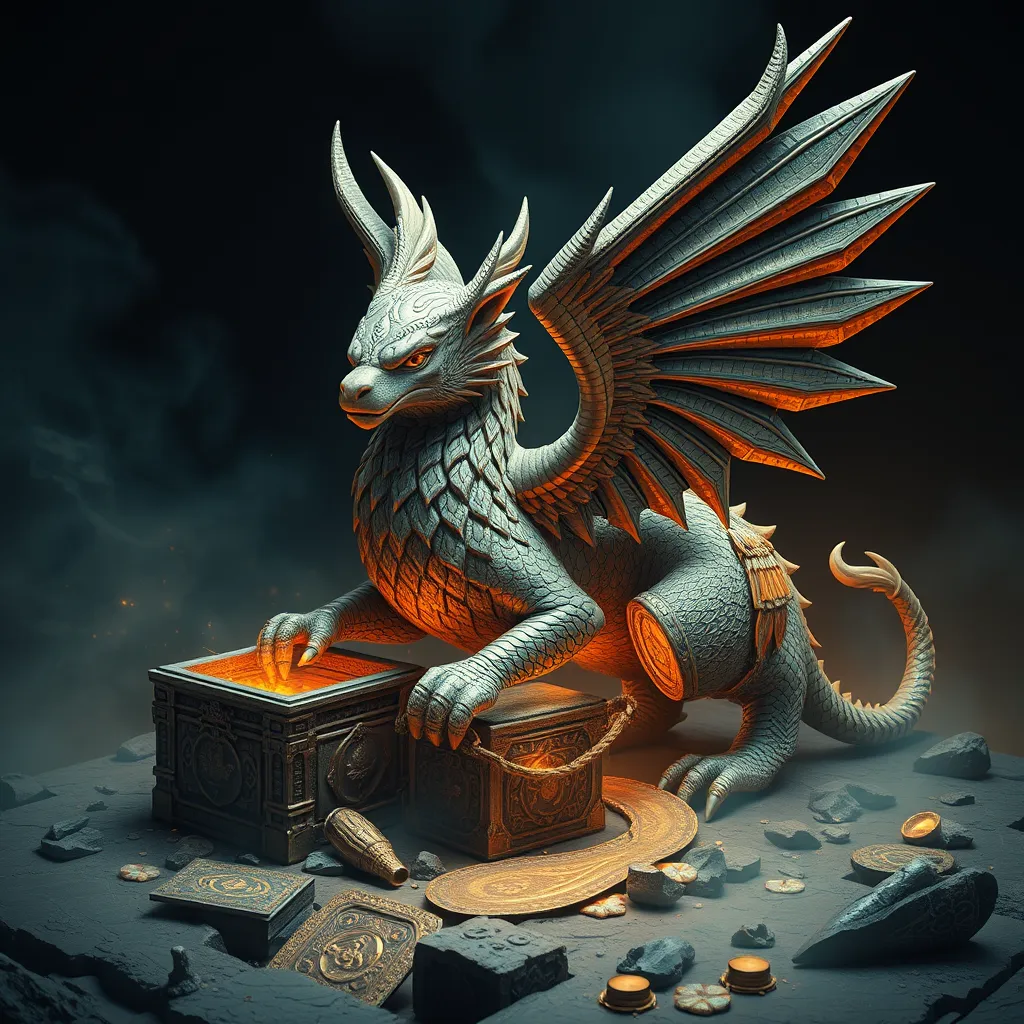The Griffin as a Guardian of the Treasure: Exploring its Role in Indian Mythology
I. Introduction
The Griffin, a majestic creature with the body of a lion and the head and wings of an eagle, has captivated the imaginations of many cultures throughout history. This mythical being symbolizes strength, courage, and protection, making it a significant figure in various mythologies. In Indian mythology, the Griffin plays a unique role, particularly as a guardian of treasures, both material and spiritual.
This article delves into the Griffin’s significance within Indian mythology, examining its historical context, symbolism, and cultural importance. By exploring the Griffin’s role as a treasure guardian, we can better understand the values and beliefs embedded in Indian folklore.
II. Historical Context of the Griffin in Indian Mythology
A. Origins of the Griffin in ancient cultures
The Griffin has roots in ancient civilizations, with its origins traced back to the Middle East and Mediterranean cultures. These cultures revered the Griffin as a symbol of divine protection and a guardian of treasures. As trade routes expanded, the Griffin’s influence spread to various regions, including India.
B. The Griffin’s evolution within Indian folklore
In Indian folklore, the Griffin has evolved to embody the values and beliefs of the local cultures. While it shares characteristics with its Western counterparts, the Indian Griffin has integrated elements from indigenous traditions, resulting in a unique representation that resonates with the local populace.
C. Comparative analysis with other mythological creatures in India
- Garuda: Often compared to the Griffin, Garuda is a divine bird in Hindu mythology, serving as the mount of Lord Vishnu. Like the Griffin, Garuda symbolizes strength and protection.
- Naga: Serpent deities in Indian mythology, Nagas also serve as guardians of treasures, particularly in the context of water and fertility.
- Simha: The lion, often representing power and royalty, shares the Griffin’s association with strength and guardianship.
III. Symbolism of the Griffin
A. Representation of strength and protection
The Griffin’s hybrid nature embodies the strengths of both the lion and the eagle, symbolizing unparalleled power and vigilance. In Indian mythology, this representation serves as a metaphor for the protection of sacred spaces, treasures, and individuals.
B. Connection to wealth and prosperity
As a guardian of treasures, the Griffin is often associated with wealth and prosperity. In various tales, it is depicted as a protector of hidden riches, emphasizing the belief that true wealth is safeguarded by powerful beings.
C. The Griffin as a hybrid creature and its dual nature
The Griffin’s duality—part lion and part eagle—symbolizes the balance between earthly strength and heavenly wisdom. This aspect reflects the interconnectedness of physical and spiritual realms in Indian thought.
IV. The Griffin in Indian Texts and Literature
A. References to the Griffin in ancient scriptures and epics
While direct references to the Griffin are rare in classical Indian texts, its essence can be found in various stories and epics where hybrid creatures serve significant roles. The Mahabharata and Ramayana, for instance, contain descriptions of powerful beings that share characteristics with the Griffin.
B. Analysis of literary depictions of the Griffin as a guardian
In many stories, the Griffin is depicted as a fierce protector, guarding treasures from those who seek to exploit or misuse them. These literary depictions often serve to convey moral lessons about the value of respect and integrity.
C. Influence of the Griffin on contemporary Indian storytelling
Modern Indian literature and cinema have seen a resurgence of interest in mythical creatures, including the Griffin. Its portrayal as a guardian continues to inspire narratives that emphasize themes of bravery, loyalty, and the protection of what is sacred.
V. Cultural Significance of the Griffin
A. The Griffin in Indian art and iconography
The Griffin’s image can be found in various forms of Indian art, from sculptures to paintings. It often appears in contexts that highlight its protective qualities, reinforcing its status as a guardian of treasures.
B. Rituals and beliefs associated with the Griffin
While not as prominent as other mythological beings, rituals honoring the Griffin can be found in certain regional practices. These rituals often focus on invoking protection for wealth and prosperity.
C. The Griffin’s role in local folklore and community narratives
In local folklore, the Griffin is sometimes portrayed as a wise and benevolent guardian, teaching communities about the importance of safeguarding their heritage and treasures. These stories serve to strengthen cultural identity and continuity.
VI. The Griffin as a Metaphor for Guardianship
A. Exploration of the concept of guardianship in Indian culture
Guardianship is a recurring theme in Indian culture, encompassing not just the protection of physical treasures but also moral and spiritual values. The Griffin symbolizes this multifaceted approach to guardianship.
B. The Griffin’s role in protecting treasures beyond the material
Beyond material wealth, the Griffin represents the safeguarding of knowledge, traditions, and ethical values. This broader interpretation highlights the importance of protecting the intangible aspects of culture.
C. Lessons and morals derived from the Griffin’s symbolism
The stories of the Griffin often convey important lessons about loyalty, courage, and the responsibility that comes with power. These morals resonate deeply within the fabric of Indian society, encouraging a sense of stewardship over both material and spiritual treasures.
VII. Modern Interpretations and Adaptations
A. The Griffin in popular culture and media
In contemporary media, the Griffin has found its way into films, literature, and art, often reimagined as a hero or protector. This resurgence reflects a renewed interest in mythological themes and characters.
B. How modern narratives reshape the Griffin’s role
Modern interpretations often emphasize the Griffin’s role as a symbol of empowerment, highlighting themes of resilience and guardianship in a rapidly changing world.
C. The Griffin as a symbol in contemporary Indian society
Today, the Griffin serves as a metaphor for various societal issues, including the need for environmental protection, cultural preservation, and the safeguarding of human rights. Its legacy continues to inspire new generations.
VIII. Conclusion
The Griffin, as a guardian of treasures, holds a significant place in Indian mythology and culture. Its multifaceted symbolism reflects a rich tapestry of values that resonate with the ideals of strength, protection, and guardianship. The enduring legacy of the Griffin serves as a reminder of the importance of mythological creatures in shaping cultural heritage and identity.
As we explore the role of such mythological beings, we recognize their contributions to our understanding of society, morality, and the human experience. The Griffin, with its powerful presence, continues to inspire and protect, embodying the timeless values that are cherished in Indian culture.



